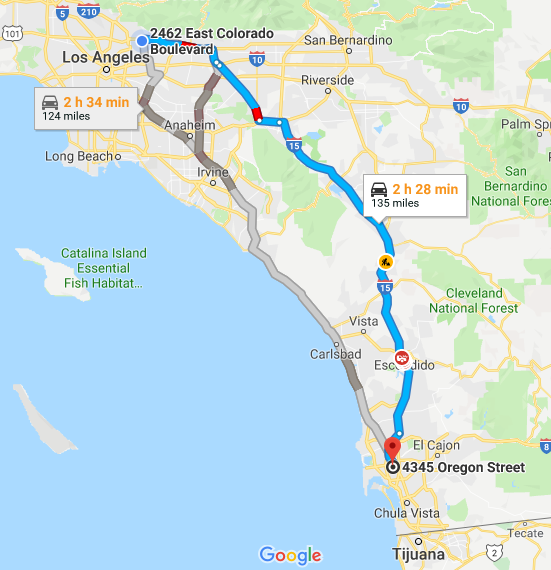Day 5 - Sept 7 - Custer, SD to Wapiti,WY
Starting mileage: 1921 Starting time: 8:00 am
Ending mileage: 2308 Ending time: 5:00 pm
Travel mileage: 387 Travel time: 10:00 hours
A refreshing morning at 55 degrees.
We soon entered Wyoming and the Thunder Basin National Grassland which is as one would expect, rolling grassland used by ranchers for their cattle.
There where quite a few oil pump-jacks scattered about the countryside but not many seemed to be operating. They may be old and no longer in use. We saw long trains with open cars loaded with a black material and guessed that it was coal. Google informed us that Wyoming is the #1 coal producing state and produces 40% of all the coal mined in the US. We also passed large coal power plants. Not surprising that we haven't seen any wind or solar farms.😒
We decided to take the scenic route through the Bighorn National Forest which goes over the 9666' Powder River Pass which is largely above the treeline. The temperature at the top was 64 degrees and when we arrived at the bottom, it was up to 88 degrees - quite a change just a few minutes later. Along the road were signs indicating the geology of the rock layers we were passing, from 35, 235 and 3 billion years ago - fascinating for someone who was a young "rock hound".
Heading west, it was even dryer, with scrub and sparse grass - this area only gets 5-10" of rain a year. In some of the flatlands, there is irrigation for corn, hay and sugar beets. We saw dump trucks overflowing with sugar beets that had just been harvested and a "mountain" where they were being stockpiled for delivery to a processing plant.
Along the way we saw two mule deer and a number of prong-horn antelope, very pretty deer-like creatures.
We stopped at the Cody Heritage Museum which was quite interesting, focusing on the pre-history, founding and history of Cody, WY.
We also stopped at the Buffalo Bill Dam Visitor was was very worthwhile. When it was completed in 1920, the 325' high dam was the highest in the world. A video documented the difficult process of constructing the dam between 1905 and 1910. Most of the construction had to be done in the fall and winter as during the rest of the year the Shoshone River was too high to allow construction. Record cold was experience when the dam was being constructed, with concrete being poured at -15 degrees and having to be kept warm to ensure its strength. The dam today provides was for irrigating 96,000 acres of farmland, business and residential water supply, electric power and flooding protection.
We are staying at the Wapiti Lodge in Wapiti, WY just outside the eastern entrance to Yellowstone. It is along the Shoshone River and has spectacular views of the surrounding mountains.
Ending mileage: 2308 Ending time: 5:00 pm
Travel mileage: 387 Travel time: 10:00 hours
A refreshing morning at 55 degrees.
We soon entered Wyoming and the Thunder Basin National Grassland which is as one would expect, rolling grassland used by ranchers for their cattle.
There where quite a few oil pump-jacks scattered about the countryside but not many seemed to be operating. They may be old and no longer in use. We saw long trains with open cars loaded with a black material and guessed that it was coal. Google informed us that Wyoming is the #1 coal producing state and produces 40% of all the coal mined in the US. We also passed large coal power plants. Not surprising that we haven't seen any wind or solar farms.😒
We decided to take the scenic route through the Bighorn National Forest which goes over the 9666' Powder River Pass which is largely above the treeline. The temperature at the top was 64 degrees and when we arrived at the bottom, it was up to 88 degrees - quite a change just a few minutes later. Along the road were signs indicating the geology of the rock layers we were passing, from 35, 235 and 3 billion years ago - fascinating for someone who was a young "rock hound".
Heading west, it was even dryer, with scrub and sparse grass - this area only gets 5-10" of rain a year. In some of the flatlands, there is irrigation for corn, hay and sugar beets. We saw dump trucks overflowing with sugar beets that had just been harvested and a "mountain" where they were being stockpiled for delivery to a processing plant.
Along the way we saw two mule deer and a number of prong-horn antelope, very pretty deer-like creatures.
We stopped at the Cody Heritage Museum which was quite interesting, focusing on the pre-history, founding and history of Cody, WY.
We also stopped at the Buffalo Bill Dam Visitor was was very worthwhile. When it was completed in 1920, the 325' high dam was the highest in the world. A video documented the difficult process of constructing the dam between 1905 and 1910. Most of the construction had to be done in the fall and winter as during the rest of the year the Shoshone River was too high to allow construction. Record cold was experience when the dam was being constructed, with concrete being poured at -15 degrees and having to be kept warm to ensure its strength. The dam today provides was for irrigating 96,000 acres of farmland, business and residential water supply, electric power and flooding protection.
We are staying at the Wapiti Lodge in Wapiti, WY just outside the eastern entrance to Yellowstone. It is along the Shoshone River and has spectacular views of the surrounding mountains.
 |
| Day 5 map |
 |
| Buffalo Bill Dam |
 |
| View from Wapiti Lodge |



Comments
Post a Comment